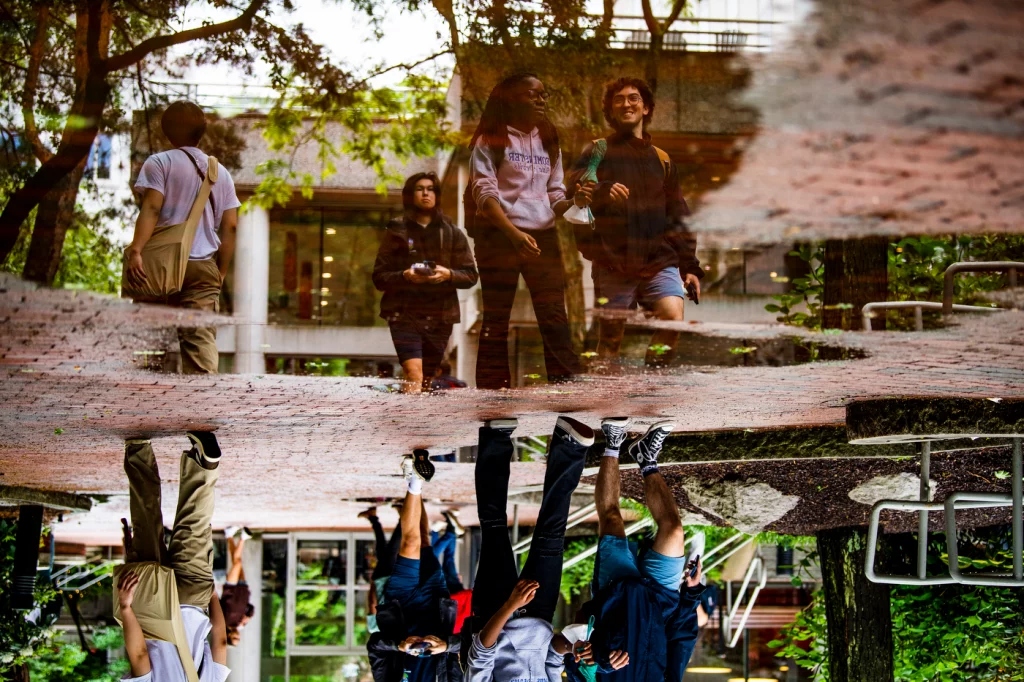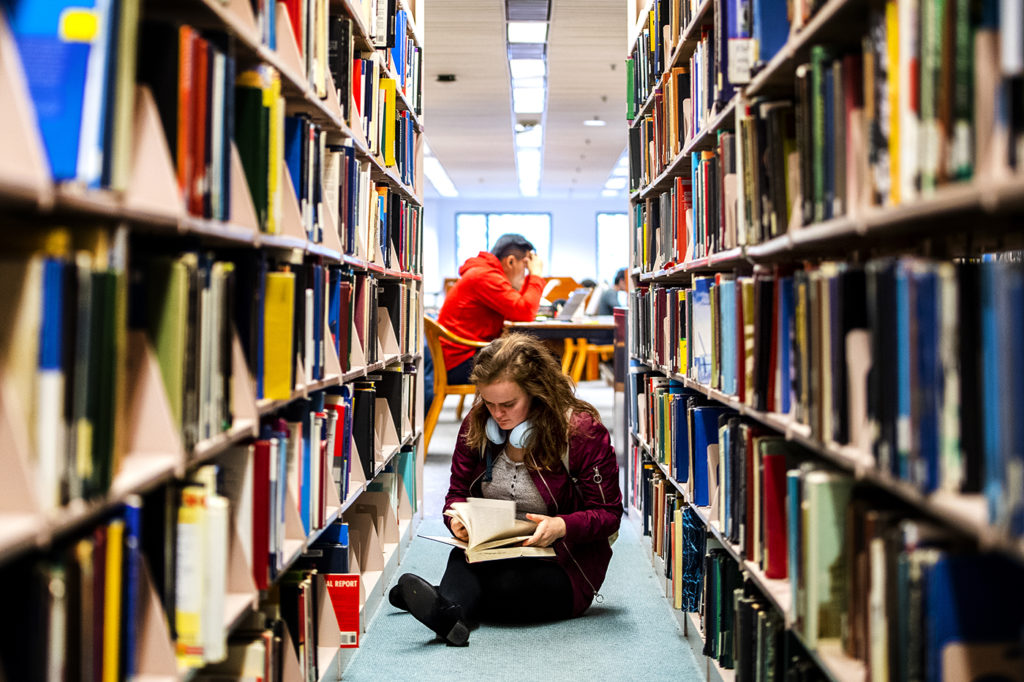Making the Most of In-class Time
In a large class, it can be difficult to know if students are understanding material well enough to apply it. “Flipping” the class is an approach many use to address this concern, and it refers to reversing the setting and sequence for when students first acquire the content vs. when they practice using it.
A traditional course structure spends precious class time on initially delivering content and asks students to do the more difficult application work outside of class via various homework and other assignments. The flipped classroom has the application of course content during class time, because students have completed introductory materials outside of class. These materials could be textbook readings, short videos, and/or interactive resources that help students bring new ideas into the context of your course.
The flipped format allows the instructor to be present for the application activities and to resolve confusion and reinforce comprehension in real time. When designed and implemented well, this approach can lead to improved outcomes and experiences (e.g., Bredow, et al. 2021; Mazur, 2009).
Successfully flipped classes involve:
- Instructor-organized and curated materials
- Students that are held accountable to engage in course content outside of class
- Students who work together in class
- Focused application activities that are facilitated by the instructor
Does it work at Northeastern?
Flipping the classroom can be an excellent way to bring active learning to the large class. This NU instructor flipped her large class and systematically documented the benefits. Here are some other useful tips for flipping some or all of your class.
1. Be strategic about which material you flip

Flipping your class doesn’t need to be an “all or nothing” decision, but you may have to prioritize.
- You can flip a single topic, a single class, or an entire course. Choose whether or what to flip based on a pedagogical rationale: knowledge and skills that are typically difficult for learners to understand and essential for more advanced work are good candidates (Malhotra, 2019).
- Recognize that you may need to eliminate topics that are less directly aligned with important learning outcomes to provide more time for those that are “nice to have,” but not as necessary (Stachowiak, 2018).
- Explore Academic Technologies’ tech tips on being strategic about which material you flip.

My approach to teaching large classes is based on ‘connection.’ Sometimes this looks like creating a class playlist and playing music in class, other times it looks like allowing them to explore their learning process by working in groups. It works.
2. Be transparent about why students are learning this way
Being explicit with students about the purpose of assignments, how they connect to learning outcomes and other assignments, and the details of how to complete them can support both learning and motivation. Below are some specific strategies for being transparent.
- Let your learners know what is expected of them with this approach and why you are using it (Burton & Wiltschko, 2019). Importantly, some educators have learned it is best not to give this approach a special label like “flipped” but instead simply describe the process as “how we do things” for this unit or course.
- Ensure that the benefits of completing pre-work are clear to learners by building on it in class. There are several strategies you can use to encourage students to actually do the pre-work (Honeycutt, 2016).
- See also the transparency section on the Assessing for Learning page of Teaching Large Classes.
- Explore Academic Technologies’ tech tips on being transparent about why students are learning this way.


In discussion threads, students state their opinion and reply to a peer’s post that differs from their own, that has expanded their point of view. I try to encourage individuality and different perspectives as an opportunity to learn, not something to be done away with.
3. Be pragmatic when selecting or creating outside materials

Production of flipped classroom materials can take as much or as little time as you give it. Below are suggestions for taking a pragmatic approach that balances the need for resources and the need to focus on other aspects of teaching.
- Consider finding and curating resources that already exist–colleagues in your professional networks and reputable resources on the internet likely have much to offer.
- Outside materials in a flipped classroom often include short videos, but videos are not absolutely necessary (Tucker, 2021; Talbert, 2017).
- If you create your own materials, they do not have to be highly-produced–a more personal approach is often more accessible to students. Also, be sure to focus on content that is relatively stable so your materials won’t quickly become outdated (Burton & Wiltschko, 2019).
- Explore Academic Technologies’ tech tips on being pragmatic when selecting or creating outside materials.
Next steps: To connect with a CATLR consultant about how you might begin flipping your course material, don’t hesitate to reach out to [email protected].
References
Bredow, C. A., Roehling, P. V., Knorp, A. J., & Sweet, A. M. (2021). To flip or not to flip? A meta-analysis of the efficacy of flipped learning in higher education. Review of Educational Research, 91(6), 878-918.
Burton, S., & Wiltschko, M. (2019). Flipping Linguistics 100: A case study in flipping a large undergraduate class. In J. Golding, C. Rawn, and K. Kern (Eds.), Strategies for teaching large classes effectively in higher education, 103-120. Cognella, Inc.
Honeycutt, B. (2016). 10 strategies to encourage students to actually do the pre-work [White paper]. BarbiHoneycutt.com. https://barbihoneycutt.com/products/free-whitepaper-10-strategies-to-encourage-students-to-actually-do-the-pre-class-work-in-flipped-and-active-learning-classrooms
Mazur, E. (2009). Farewell, Lecture? Science, 323, 50-51.
Malhotra, N. (2019). Implementing active learning and student-centered pedagogy in large classes. Faculty Focus.
Stachowiak, B. (Host). (2018). My flipped classroom (No. 203) [Audio podcast episode]. In Teaching in Higher Ed. https://teachinginhighered.com/podcast/my-flipped-classroom/
Talbert, R. (2017). Myths and facts about flipped learning. Educause. https://er.educause.edu/articles/2017/9/myths-and-facts-about-flipped-learning
